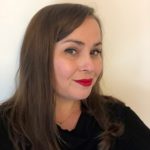Therapeutic advances in congenital adrenal hyperplasia due to 21-hydroxylase deficiency

Find out more about this group of rare autosomal recessive conditions affecting the adrenal cortex called Congenital adrenal hyperplasia (CAH).
Rare genetic causes of primary adrenal insufficiency excluding congenital adrenal hyperplasia

Find out more about the rare genetic causes of paediatric adrenal insufficiency and how best to treat affected children.
Dominant-negative growth hormone receptor mutations: Genetics and clinical consequences

Read the discussion on the genetics and clinical consequences of dominant-negative growth hormone receptor alterations.
Congenital hypothyroidism guidelines: has anything changed?

Congenital hypothyroidism guidelines: has anything changed?
Why is the growth plate the most important organ for childhood growth: how can it be investigated for clinical diagnosis?

Why is the growth plate the most important organ for childhood growth: how can it be investigated for clinical diagnosis?
Personalised medicine for hypophosphataemic rickets – a new era

Rickets results from impaired mineralisation of the growth plate. Hypophosphataemia is common to all forms of rickets as hypophosphataemia impairs both hydroxyapatite formation and failure of apoptosis of the hypertrophied chondrocytes.
Identification of GH insensitivity among short children with normal GH secretion

The evaluation of children presenting with short stature includes detailed clinical, phenotypic, auxological and biochemical assessments with genetic analyses in selected cases.
Changes in the timing of puberty: clinically significant, genetic or environmental?

Amongst healthy adolescents, there is a near-normal distribution of the timing of puberty, with the mean age of onset in boys being 11.5 years and in girls 11 years, but wide inter-individual variation.
Idiopathic short stature is not a diagnosis: A strategy is needed to identify the true pathogenesis in cases of unexplained short stature

The designation “Idiopathic short stature” was first used in the 1980s as a description for short children who had normal growth hormone secretion and otherwise unexplained short stature.
Supporting families of paediatric patients with adrenal disease

While adrenal disease in children is quite rare, healthcare professionals today working in paediatric endocrinology departments are experts in managing the care of children with adrenal disease.
